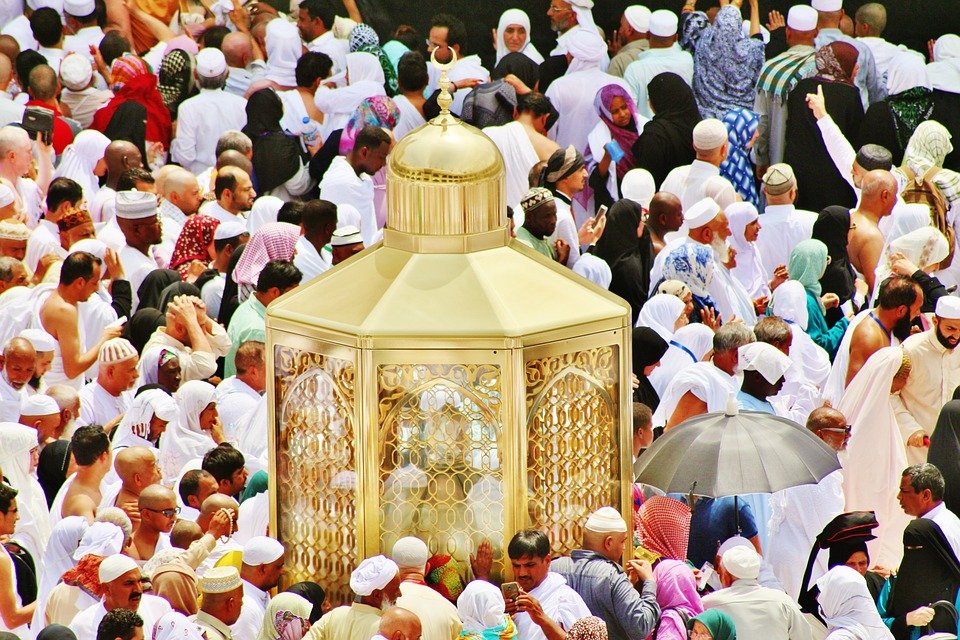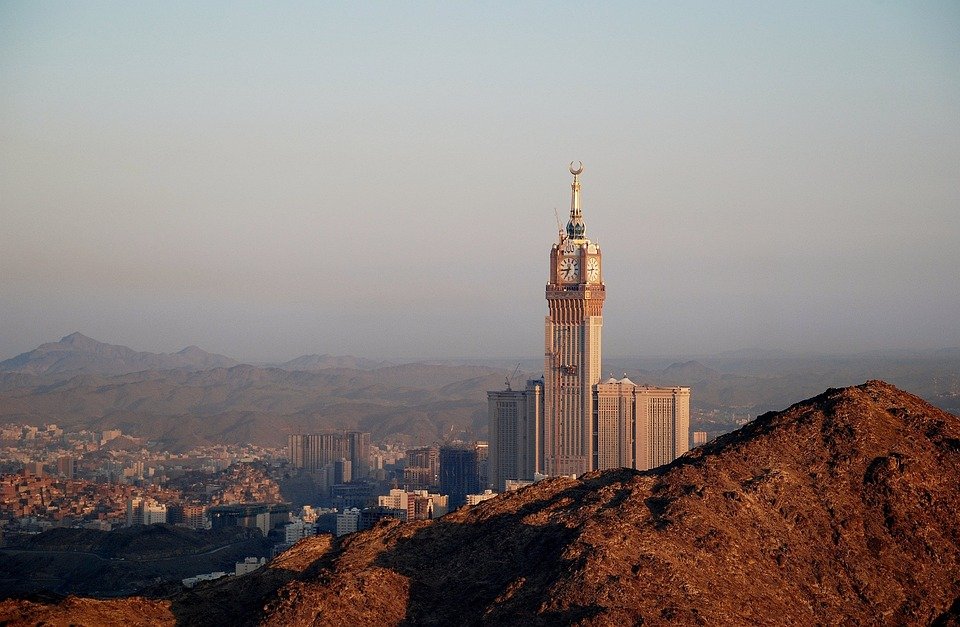You are here to read: What is Hajj: Significance, Rituals, and Key Insights – A Thoughtfully Written Guide Offering Spiritual Wisdom and Travel Advice for Every Pilgrim who is going on holy journey of Hajj or Umrah.
Hajj is one of the most significant pillars of Islam, offering Muslims a chance to demonstrate their devotion and faith. If you’re curious about what Hajj entails, you’ve come to the right place. In this article, I promise you will find a comprehensive guide on what Hajj is, covering its importance, rituals, and key insights. As we explore this profound spiritual undertaking, I aim to equip you with the knowledge you need to understand its depth and meaning.
I believe understanding what Hajj means goes beyond the rituals; it embodies the essence of faith, unity, and humility. For us, the significance of Hajj lies in its ability to bring millions together in an act of worship that transcends borders. With over nine years of experience in the travel field for Umrah and journeys to Makkah and Madinah since 2016, I feel confident we can provide you with the most accurate and insightful information about “What is Hajj: Significance, Rituals, and Key Insights.” Join me as we explore this transformative experience that holds immense spiritual value for millions of Muslims around the globe.
What is Hajj: Significance, Rituals, and Key Insights
The Essence of Hajj
Hajj is an extraordinary pilgrimage that holds immense significance in the lives of Muslims around the world. Every year, millions of pilgrims gather in Mecca, Saudi Arabia, to perform this spiritual journey. The essence of Hajj lies in its reminder of humility, devotion, and the unwavering faith that Muslims have in Allah. This journey reflects a deep sense of unity, as individuals from different cultures and backgrounds come together in a shared experience of worship.
The act of performing Hajj is obligatory for all Muslims who are physically and financially able. It serves as a powerful reminder of the core tenets of Islam. In my view, engaging in this pilgrimage helps to reinforce the values of equality and brotherhood among believers. Regardless of status or nationality, everyone wears simple white garments called Ihram, symbolizing purity and the absence of material distinctions.
The Historical Background
The roots of Hajj trace back to the time of the Prophet Ibrahim (Abraham) and his family. According to Islamic tradition, Ibrahim was commanded by Allah to leave his wife Hagar and their infant son Isma’il in the arid region of Mecca. When water ran out and despair surrounded them, Hagar ran between two hills, Safa and Marwah, seeking help. Miraculously, she found a spring of water, known as Zamzam. This historical background provides the foundation for the rituals carried out during Hajj, as they commemorate the struggles of Hagar and Ibrahim.
I find it fascinating how these ancient stories connect to the rituals involved in Hajj. Each step taken by pilgrims during the pilgrimage pays homage to the trials Ibrahim and Hagar faced. By retracing their steps, believers strengthen their faith, reflecting on sacrifice and submission to Allah’s will. It’s remarkable how a journey that began centuries ago continues to hold such relevance today.
Key Rituals of Hajj
Hajj consists of several key rituals that each pilgrim must perform. These rituals include Tawaf, which involves circling the Kaaba seven times, and Sa’i, the act of walking between the hills of Safa and Marwah. Each ritual serves a unique purpose, providing spiritual lessons and moments of reflection. Many pilgrims express a profound sense of connection to their faith while engaging in these rituals, bringing them closer to Allah.
You're at the middle of this awesome post at AirlinkHajjandUmrah.com through: What is Hajj: Significance, Rituals, and Key Insights. Keep reading, it gets better!
Another significant ritual is standing at Arafat, known as the climax of Hajj. Here, pilgrims spend the afternoon praying, worshipping, and reflecting on their lives. It’s a time of deep self-examination and repentance, fostering personal growth. In my opinion, it’s one of the most meaningful aspects of Hajj, as it allows participants to seek forgiveness and renew their intentions. By engaging in these rituals, believers form a spiritual bond with Allah, feeling uplifted and transformed.
The Importance of Brotherhood
One of the most beautiful aspects of Hajj is the overwhelming sense of brotherhood that surrounds it. Pilgrims come together, regardless of their backgrounds, to share in this sacred experience. They laugh, cry, and support one another, creating a community built on faith and love. This unity reinforces the idea that all human beings are equal in the eyes of Allah.
During my time reflecting on Hajj, I feel that the bond created among pilgrims is truly uplifting. Everyone experiences struggles and joys, and many make lifelong friendships during this time. This camaraderie enhances the spiritual atmosphere of the pilgrimage and embodies the teachings of Islam, emphasizing compassion and kindness to one another. By participating in Hajj, each person contributes to the larger narrative of faith, reinforcing the importance of community in spiritual practice.
Spiritual Transformation
Hajj is not just a series of rituals; it’s a pathway to spiritual transformation. Pilgrims often describe the pilgrimage as a life-changing experience. They return home with renewed faith, a deeper understanding of their beliefs, and a fresh perspective on life. I believe this transformation stems from the powerful environment of devotion and worship that permeates Mecca during this time.
Throughout Hajj, pilgrims engage in self-reflection and introspection. They acknowledge their faults, seek forgiveness, and strive to improve their character. Many come back with a stronger commitment to their faith, hoping to integrate the lessons learned during the pilgrimage into their daily lives. In my opinion, this personal growth is one of the most significant gifts that Hajj offers, as it inspires individuals to become better versions of themselves.
Frequently Asked Questions
Many people have questions about Hajj and its significance. One common question is whether everyone can participate. While it’s a mandatory act for able Muslims, there are certain rules and guidelines to follow. Those who are unable to perform Hajj have alternative ways to contribute to their communities and fulfill their spiritual obligations. I think this inclusivity is important, as it allows people to engage with their faith, even if they cannot make the pilgrimage.
Another frequent query relates to the timing of Hajj. The pilgrimage takes place during specific dates in the Islamic month of Dhul-Hijjah. I feel it’s essential to understand that this timing is rooted in tradition and has great significance within the history of Islam. Thus, those planning to participate must carefully prepare, setting intentions and taking steps to ensure a smooth experience.
Conclusion
In summary, Hajj is a deeply significant pilgrimage that encompasses spiritual growth, historical connections, and a sense of community. The rituals serve to remind us of the importance of faith and devotion in our lives. Whether participating or simply learning about Hajj, we all gain valuable insights into the essence of Islam and the profound teachings it offers.
As I reflect on all that Hajj embodies, I am reminded of its ability to unite individuals from every corner of the globe. In my opinion, this pilgrimage is not merely a physical journey; it’s a celebration of faith, resilience, and the transformative power of submission to Allah. Each year, Hajj continues to inspire, guiding us toward a deeper understanding of ourselves and our purpose in life.
That wraps up What is Hajj: Significance, Rituals, and Key Insights. Thanks for sticking with us till here! Share this: What is Hajj: Significance, Rituals, and Key Insights with your friends.
Check our homepage at Air Link Hajj & Umrah for more awesome updates.
Some interesting posts are: 1: Umrah Mubarak, 2: When is Umrah closed 2026?, 3: When does Umrah start after Hajj 2026?
Mushu, an experienced Saudi Arabia traveler and writer, shares insightful tips and spiritual reflections to enhance Hajj and Umrah journeys for fellow pilgrims. He has been to Makkah and Madina from 2016 to 2023 many times and his posts will reflect this.






